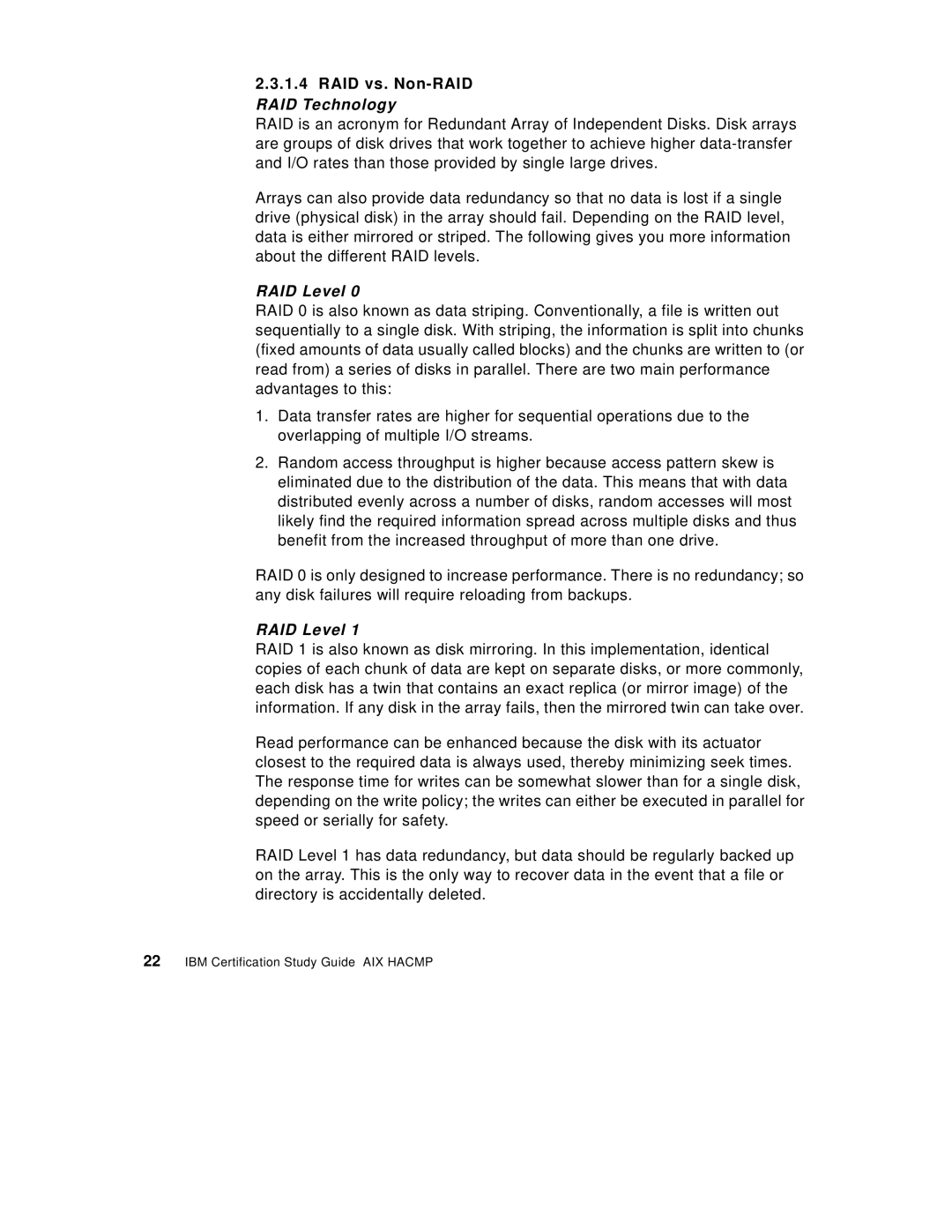2.3.1.4RAID vs. Non-RAID RAID Technology
RAID is an acronym for Redundant Array of Independent Disks. Disk arrays are groups of disk drives that work together to achieve higher
Arrays can also provide data redundancy so that no data is lost if a single drive (physical disk) in the array should fail. Depending on the RAID level, data is either mirrored or striped. The following gives you more information about the different RAID levels.
RAID Level 0
RAID 0 is also known as data striping. Conventionally, a file is written out sequentially to a single disk. With striping, the information is split into chunks (fixed amounts of data usually called blocks) and the chunks are written to (or read from) a series of disks in parallel. There are two main performance advantages to this:
1.Data transfer rates are higher for sequential operations due to the overlapping of multiple I/O streams.
2.Random access throughput is higher because access pattern skew is eliminated due to the distribution of the data. This means that with data distributed evenly across a number of disks, random accesses will most likely find the required information spread across multiple disks and thus benefit from the increased throughput of more than one drive.
RAID 0 is only designed to increase performance. There is no redundancy; so any disk failures will require reloading from backups.
RAID Level 1
RAID 1 is also known as disk mirroring. In this implementation, identical copies of each chunk of data are kept on separate disks, or more commonly, each disk has a twin that contains an exact replica (or mirror image) of the information. If any disk in the array fails, then the mirrored twin can take over.
Read performance can be enhanced because the disk with its actuator closest to the required data is always used, thereby minimizing seek times. The response time for writes can be somewhat slower than for a single disk, depending on the write policy; the writes can either be executed in parallel for speed or serially for safety.
RAID Level 1 has data redundancy, but data should be regularly backed up on the array. This is the only way to recover data in the event that a file or directory is accidentally deleted.
